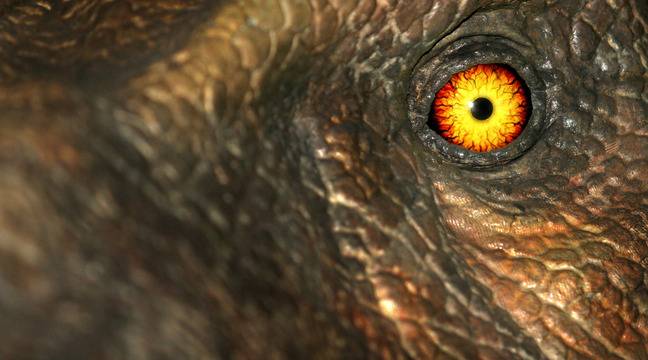When a meteorite struck the Earth 65 million years ago, decimating the era of the dinosaurs, these large reptiles were already in disrepair. For 10 million years, they were already in decline. This is the conclusion
a study, Published Tuesday in the magazine nature connections, Led by Fabien Condamine, a CNRS researcher at the Institute of Evolutionary Sciences in Montpellier (Herault).
Particularly valuable findings, for those interested in dinosaurs: Paleontologists are arguing about whether their extinction occurred suddenly, or if the 12 km2 meteorite just dealt with a “reversal of grace,” the researcher notes. Fabian Condamine is inclined to the second hypothesis.
lower temperatures
“Its decline will be due to significant changes in the environment, including lower temperatures during the Cretaceous period,” he asserts. We would have lost 7 degrees Celsius, at the very least. For these species, unable to produce their own body heat, and needing high temperatures to feed, move or reproduce, this climate change has been catastrophic. “This decrease in temperature is associated with an increase in the extinction” of the dinosaurs, continues Fabian Condamine.
To make matters worse, the first disappearances concerned first of all herbivores, upsetting the balance in ecosystems. In particular, the gradual extinction of vicious carnivores, who found fewer herbivores to eat. The researcher in Montpellier explains: “If we draw an analogy with today, with the African plains, for example, then all herbivores, giraffes, elephants, zebras, wildebeest, deer are very structural to the entire ecosystem. Because all predators depend on them.” But also parasites and plants. Without elephants, there is no longer the same vegetation.”
A “lesson” for the man whose “environment is deteriorating”
To achieve these findings, the international team led by Fabian Condamine analyzed the evolution during the Cretaceous period of six large families of dinosaurs, including the famous tyrannosaurs, triceratops and hadrosaurs. The researchers collected piles of fossil data over several years, and estimated the evolution of each species over thousands of years.
For Fabian Condamine, this study highlights a “good example of an overly dominant group” facing external disturbances that gradually decline. “We can compare this to other dominant groups,” the researcher says. I think in particular of certain groups of sharks, which today find themselves on the verge of extinction. And the man? “It’s a lesson for us too, that’s for sure,” he notes. Our environment is deteriorating. Moreover, climatically. “

“Unapologetic pop culture trailblazer. Freelance troublemaker. Food guru. Alcohol fanatic. Gamer. Explorer. Thinker.”




